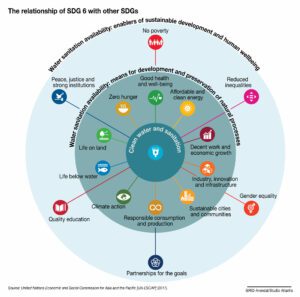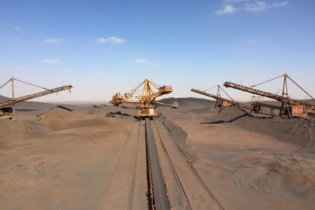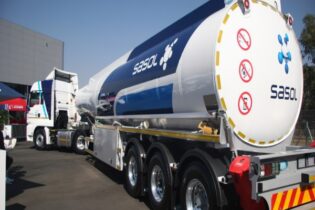The 17 Sustainable Development Goals (SDG) have one ambitious target – to end extreme poverty and achieve sustainable development worldwide by 2030. Achieving SDG 6 is not only essential for the water and sanitation sector, but also has a major positive impact on all other 16 SDG goals.
A brief description of the interconnected nature between SDG 6 and the other SDGs: SDG 1: No Poverty With access to clean water, agriculture is improved, enabling communities to produce income from their crop’s yield. Improved agriculture produces nutritious, safe food that makes physically and mentally strong, healthy people that can work and get an income. In developing countries, 80% of sicknesses are due to drinking and washing with contaminated water. Water-borne illnesses cause preventable deaths. Proper handwashing effectively prevents viral illnesses and reduces the spread of viruses. When s family’s income-provider is sick or dies from unsafe water, it can plummet them into deeper poverty. The burden to collect water lands on women and children. The hours-long trek to provide water for families keeps women out of the workforce and girls out of school, diminishing their ability to gain the necessary skills to support themselves financially. SDG 2: Zero Hunger Within agriculture, adequate water is needed at the right time for seeds to germinate, crops to grow and produce vegetables, fruits, grains, fibres such as cotton, and oilseeds. Similarly, water is essential for livestock to be able to produce milk, meat, and eggs. Poor water quality can also negatively affect fish stocks. SDG 3: Good Health and Wellbeing Safe drinking water and adequate sanitation and hygiene are fundamental to protecting health. Contaminated water that is consumed may result in water-borne diseases, including viral hepatitis, typhoid, cholera and dysentery. Water can also provide a habitat for mosquitoes and snails that are intermediate hosts of parasites that cause diseases likemalaria. Without adequate quantities of water for personal hygiene; infections and viruses can spread easily. SDG 4: Quality Education Improving access to water, sanitation and hygiene (WASH) facilities in schools can improve the health, attendance and welfare of students and teachers, and can therefore contribute to better educational outcomes. WASH in schools is particularly important for girls and young women, as is providing privacy for menstrual hygiene management. School pupils are well placed to start learning about safe water and sanitation through the school curriculum. SDG 5: Gender Equality Many women in poor households bear the burden of retrieving water from distant sources and often have little option but to use polluted wastewater for domestic purposes, exposing them to unsafe water. They are most affected by the lack of adequate sanitation facilities and/or sufficient wastewater treatment. Water is heavy. Carrying it consumes time and valuable personal energy that can prevent girls from attending school. Bringing water sources closer to people reduces the time needed to collect water and makes more time available for educational activities, especially for females. Paths to water sources that are long and through remote areas put women and girls at risk of sexual and physical violence. SDG 7: Affordable and Clean Energy Water and energy are mutually dependent, with all energy forms requiring water to varying degrees. In turn, water management, including treatment and pumping, requires energy. SDG 8: Decent Work and Economic Growth Water facilitates all types of economic activity – secure water of proper quality is essential for development. SDG 9: Industry, Innovation and InfrastructureIndustry is a significant and, at times, major consumer of water and needs to have appropriate water quantity and quality. Simultaneously, industry may have the potential to pollute water resources.
SDG 10: Reduced Inequalities Access to basic services (like water and sanitation) will contribute towards reducing inequalities across lines of geography, gender, race and wealth. SDG 11: Sustainable Cities An adequate and sustainable supply of water and sanitation is a requirement for a sustainable city. Cities are also increasingly playing a role in the management of water-related ecosystems. SDG 12: Responsible Consumption and Production Water is an integral part of consumption and production cycles of food, energy, goods and services. Managing these processes sustainably is important in protecting the quantity and quality of water resources and using water more efficiently. For example, the safe reuse of wastewater can help create more circular, sustainable production and consumption patterns. Improved sanitation systems and treatment plants can generate fertiliser from human and animal waste that could be used in farming or turned into biofuels. SDG 13: Climate Change Climate change is often discussed in terms of carbon emissions, but people feel the impacts largely through water. The effects of climate change are altering the hydrological cycle, resulting in more frequent and severe extreme events and disasters such as droughts and floods, damaging water supplies and sanitation services. SDG 14: Life Below Water Water-related ecosystems including wetlands, rivers, aquifers and lakes sustain a high level of biodiversity and life. They are vital for ensuring a range of benefits and services such as drinking water, water for food and energy, habitats for aquatic life, and natural solutions for water purification and climate resilience. However, water-related ecosystems are increasingly under threat, relying on sufficient water quantity and quality to maintain their full functionality. These ecosystems are enduring effects from human activities such as pollution, infrastructure development and resource extraction. Increased access to safely managed sanitation services should enable the reduction of marine nutrient pollution. Reducing untreated wastewater will also protect aquatic ecosystems. SDG 15: Life on Land Water and land management are closely associated, with activities taking place on land using and potentially polluting water resources. Land-based ecosystems depend on freshwater resources in sufficient quantity and quality. In turn, activities on land, including how land is used, influence water availability and quality for people, industry and ecosystems. Protecting forest catchments and encouraging sustainable land management practices, such as buffer strips along waterways and conservation agriculture, can reduce the impact on water quality. SDG 16: Peace, Justice and Strong Institutions Improved water governance can reduce conflict, displacement and migration. Good water management can support socioeconomic development, and bring peace and security to countries and across countries that share freshwater ecosystems, particularly those under threat.” SDG 17: Partnerships for the Goals The pursuit of partnerships that aim to improve finance, capacity building, data acquisition and monitoring, science, innovation and technology in the water sector are essential to achieving SDG 6.






